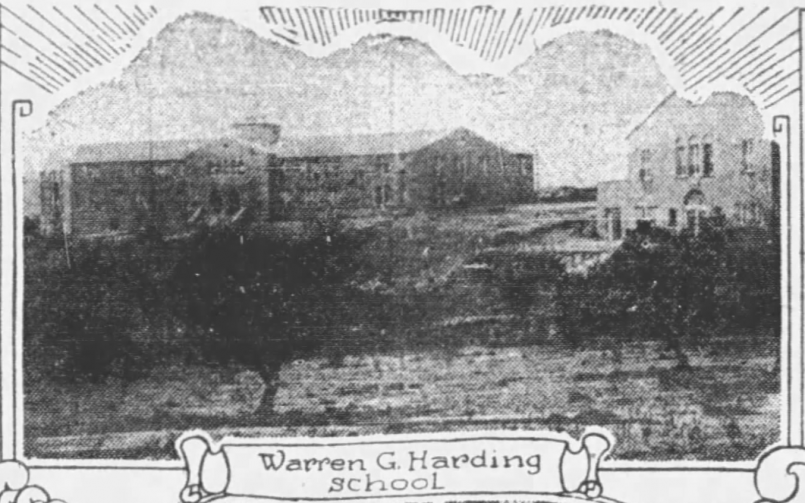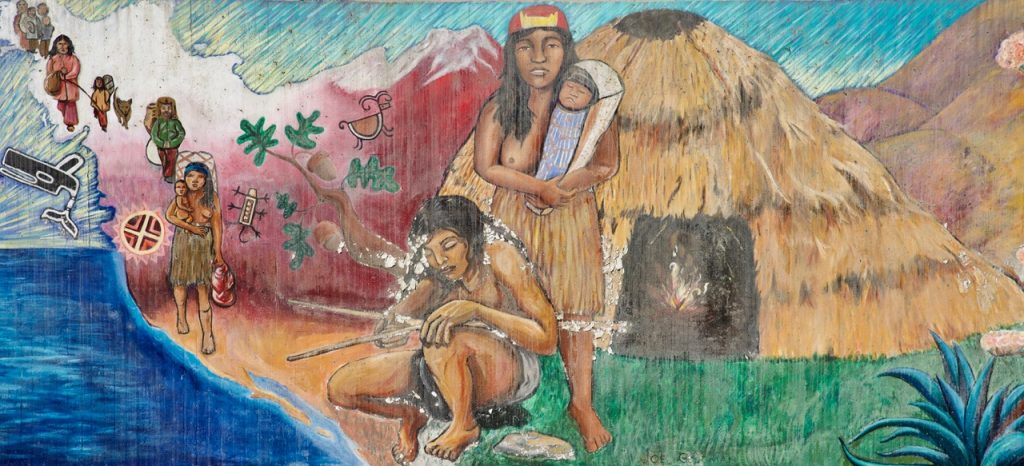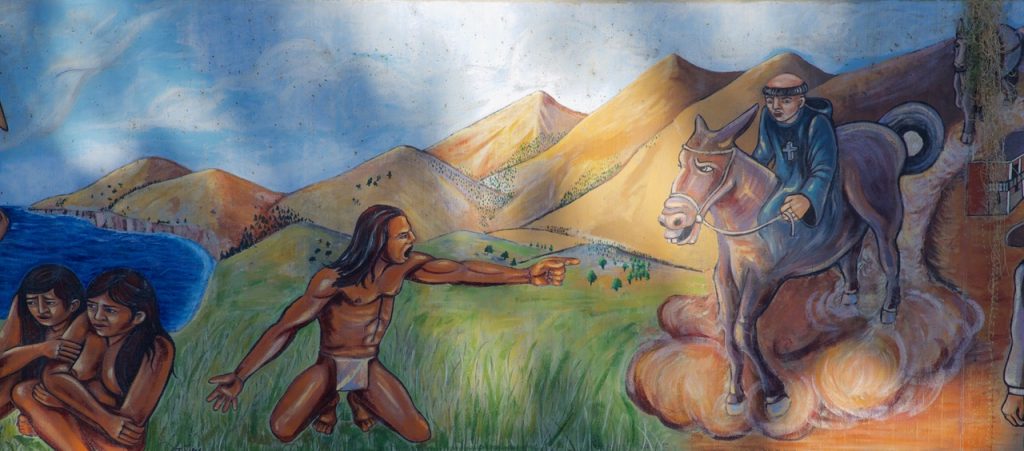
15
May, 2023
Where the Warriors Are
As we move towards the 2024-25 school year, which will mark the hundredth anniversary of Uni High, I am going to write a bit about the history this land is on and the people who crossed over it. I begin with my own memories of the eighties and a bit of history about the first people to love our springs and the land it’s on. Through the years, the amount of history different generations learned about our campus ebbed and flowed as society has wended its way around celebrating a triumphalist view of the West, confronting a more freighted account of dislocation and loss, and at other times simply erasing the presence of Los Angeles history entirely. As for me, I imagined myself, like the David Bowie song, as one of Los Angeles’ Absolute Beginners. Who cared who came before us?
University High School in the 80s was very much a don’t ask, don’t tell, don’t investigate time period, particularly when it came to the history of the high school. Not too long before, the Innovative Program School (IPS) had reigned supreme. For anyone who still doesn’t know what that was like, there’s no better way to find out than to read David Kukoff’s 2016 article in Los Angeles Magazine called “Sex, Drugs, and Textbooks: Inside L.A.’s Most Controversial Educational Experiment –Uni High tapped into the pop-psych teachings of the ’70s to create one of the most bizarre curriculums of the era.” The title alone gives you an idea of what was going on there until it brought to an end in 1978. Given the drugs, streaking, Scientology, and showing of Deep Throat for a family movie night that were all part and parcel of the IPS curriculum, it is rather remarkable that on one talked about it. I guess the teachers were relieved the 1980s were a return to the uptight 1950s, with Ralph Lauren golf attire and Ton Sur Ton pants swapped in for button down shirts and poodle skirts.
But the 1970s weren’t the only thing teachers and staff didn’t talk about. I don’t remember much, if any, serious conversation about the Tongva remains found on campus, including the ones found in 1976, which were the first subject to archeological testing. Throughout the campus, a host of other ancestral and archeological artifacts had been found again in 1980. Such momentous and culturally significant unearthings were reburied under mountains of dry history textbooks that served as an unqualified rebuke to William Faulkner’s famous quote, “The past is never dead. It’s not even past.”
In the spring of 1984, when my young health teacher, Ms. Erwin, would get worn down by one of the worst assaults the human psyche can endure, sixth period adolescent revolt, she would open the door of our classroom bungalow, which sat on the edge of the natural springs. She would attempt one last mandate for the day, that we take up rakes to the fallen leaves. I may have raked a few piles of leaves from one part of what I now know as the Sacred Tongva Gabrielino springs to another. Yet I did not bother to imagine who might have depended upon these springs for water 200 years before, or 1000, and certainly not 8000. I couldn’t even recognize those springs as a source of water people would have needed for drinking. To me, it was just a pretty pond. Nice. Even outdoors, it was as if I were existing inside a home in which I never once thought to draw the blinds back and look out a window.
But the information was there had I only employed the cinema of imagination. The ghosts of Kuruvungna and even, perhaps, their descendants were all around. The conquistadors’ diaries tell their story quite well in fact. Commander Gaspar de Portola was accompanied by Miguel Constanso, an experienced engineer from Spain who is now considered one of California’s first great historians. In addition to the diaries he kept, we have those of Father Crespi, and Spanish naturalist José Longino Martínez. As the explorers traveled through the state, scouting for Mission sites, Constanso described the native people he met as strong, beautiful, generous, peaceful people with many talents and a pleasant way of life.
Monday, July 24, 1769— We set out, and, taking the course to the north-northwest through another canyon that opens into that of Santa Maria Magdalena, we turned to the west and reached the top of some low hills. Afterwards, crossing a considerable stretch of level country, we entered another canyon, very picturesque, which ran at the foot of a high range, containing a stream of water and many trees. We pitched our camp to the east on level ground. Immediately, there came to visit us the Indians who inhabited a village within the same canyon. They came unarmed and showed unequaled affability and gentleness. They made us gifts of their humble seeds, and we presented them with ribbons and trifles.
A week and a half later and several happy encounters later, the group stopped at the Sacred Tongva Gabrielino Springs. Father Crespi recorded the following diary entry on Friday, August 4, 1769 as they once again were met with kindness and generosity.
––From the Ojo de Agua de los Alisos, skirting the mountains, over a good level road covered with grass, we reached the Ojos de Agua del Berrendo, a name we gave the place because we caught there one of these animals alive — its leg had been broken on the preceding afternoon by a musket-shot from a volunteer soldier who had not been able to overtake it. The watering-place was situated in a hollow surrounded by low hills near the seacoast. Here we found an Indian village [and the inhabitants were] very good-natured. They came at once to our quarters with trays of seeds, nuts, and acorns; to these presents we responded with our strings of glass beads, which they hold in high esteem.
To the Ojo de Agua del Berrendo, 2 leagues. From San Diego, 48 leagues.
To think that our very school has a place in recorded history and that this history was of so little interest to teachers in the business of teaching history or to the students in the business of studying it is unnerving. Stranger still, the story was once the stuff of local lore. Even on page 7 of the 1926 yearbook, the principal wrote so casually of what had once been:
“Within the memory of the living this very site was the abiding place of the Red Men. The changes in civilization are indicated by the differences between the crude relics left here by them and the implements of today. It is a long look from the stone, mortar and pestle to the electric grinder and mixer of the cafeteria; from the stone hammer to the machinery of the shops; from the flint spearheads to the deadly army, rifle of the ROTC; from the scratches in the rocks, to the first issue of the Chieftain.”
Yet over time, this history, even in this bigoted form, was lost to students while new archeological discoveries were repeatedly recovered on the site.
I don’t think the reason we forgot this stuff is that it was too boring. School wouldn’t be school without boredom any more than home cooked dinner can be dinner without the mess. I think we lose particular histories, be they family histories or social ones, because they are the ones most difficult to contront. We don’t talk easily about wrongs we can never make right or losses that cannot be recovered.
In this way, most of us whose families immigrated under the duress of poverty, exploitation, or violence to this country looked away at what had been lost to our own ancestors just as we did with the original inhabitants in our city and on our campus. With respect to indigenous people, it was easiest for newcomers to pretend that whatever was there was inherently doomed, of no value to the modern world. Much of anthropology and history had us convinced of such ideas, and perhaps steeled us against further inquiry. This is unfortunate because the history and achievements of those who came before us, could have been a more humane and environmental blueprint of how to settle more sustainably in their lands.
In his essay, Political Ecology of Prehistoric Los Angeles, L. Mark Raab noted that is “fairly common to attribute a high degree of positive environmental manipulation and quasi-agricultural food production to groups such as the Chumash” ( 2005: 31). Yet the idea that groups like the Chumash and similarly the Tongva had exerted any sort of expertise in shaping the land was not widely understood or taught at the high school level in the mid-1980s. Much of our misperceptions were popularized and thus inherited from well-known men like John Muir. When Muir first entered Yosemite valley, in the spring of 1868, he believed he was entering a wilderness untouched by human hands. He did not understand that what he was looking at was in fact as ecologist and ethnobotanist M. Kat Anderson cites in Tending the Wilderness “the fertile seed, bulb, and greens gathering ground of the Miwok and Yokuts Indians, kept open and productive by centuries of carefully planned indigenous burning, harvesting, and seed scattering.”
Similarly, famed anthropologist Alfred Kroeber advanced the notion that the California Indian was just a passive, primitive beneficiary of ample resources. L. Mark Raab, notes “In most of California the climate as easy, food reasonably abundant, and the population relatively dense for a non-farming one. If cultural progress was quiet, it was not because of nature’s adversity but rather because, in Toynbeean concept, challenge was feeble and response was mild.” This view infantilized them, as if they were fed by mother nature, whose work they did not understand.
This is the world view unto which I was born and educated. We were told that Indigenous people survived by passively receiving the fruits of nature, fruits that would surely have run out as population increased. Though we had a dawning sense at the same time that our own way of life was unsustainable, we were not encouraged to compare the real interactions that Indigenous people had with the land with our own because we were taught that they did not interact with the land per se, they just “lived off it” in some freeloading savage manner of people without a good Christian work ethic.
M. Kat Anderson shows just how definitive the role of Indigenous people were in shaping the landscape of California. In her book Tending the Wild Native American Knowledge and the Management of California’s Natural Resources. Without their intervention, the landscape would have appeared very different to the Spaniards and later immigrants to the area. To this day, she notes, Indigenous people lament not only the loss of their land, but their right to care for the land by using it to their advantage in a way that enabled other life forms to thrive.
“Interestingly, contemporary Indians often use the word wilderness as a negative label for land that has not been taken care of by humans for a long time, for example, where dense understory shrubbery or thickets of young trees block visibility and movement. A common sentiment among California Indians is that a hands-off approach too. Nature has promoted feral landscapes that are inhospitable to life. ‘The white man sure ruined this country,’ said James Rust, a Southern Sierra Miwok elder. ‘It’s turned back to wilderness’ (pers. comm. 1989). California Indians believe that when humans are gone from an area long enough, they lose the practical knowledge about correct interaction, and the plants and animals retreat spiritually from the earth or hide from humans, when intimate interaction ceases, the continuity of knowledge, passed down through generations, is broken, and the land becomes ‘wilderness.’”
In place of the Indigenous expert who manipulated California’s resources into a thriving ecosystem, we were instead instructed on the shiftless savage mindlessly awaiting devastating resource depletion. In fourth grade, we built our missions and learned about how Father Junipero Serra arrived in California and saved the savage souls with religion and the opportunity to learn how to do good honest work.
Casting light on a grimmer reality, we did not learn of one of his heavier preoccupations, the barbarism of Spanish soldiers. Centuries of indigenous ecological knowledge of both garden and wilderness came to a savage end at the hands of soldiers, themselves cast out of any youthful innocence and into a world of rapacious violence, a world in which any taboos against needless and carnal violence were fast forgotten. Whatever one may think of saving souls as part of colonization, this project was little aided by soldiers who seemed drunk on damnation.
In Junípero Serra’s report to to Antonio Maria de Bucareli y Ursua, the Viceroy of New Spain, on May 21, 1778, he wrote:
In the morning, six or more soldiers would set out together, with or without the permission of their Corporal, on horseback, and go to the far distant rancherías, even many leagues away. When both men and women at sight of them took to their heels and this account comes from the Fathers, who learned of it from the many declarations and complaints of the gentiles–the soldiers, clever as they are at lassoing cows and mules, would catch an Indian woman with their lassos to become prey for their unbridled lust. At times some Indian men would try to defend their wives, only to be shot down with bullets. Of the two Fathers who started the mission, the older would some- times work with his hands as ploughman. But when he saw such disorders, especially when with his own eyes he saw a soldier actually committing deeds of shame with an Indian who had come to the mission, and that even the children who came to the mission were not safe from their baseness, sick at heart he took to his bed, and on the advice of the others, retired to San Diego. (Serra 1955, 363)
Boiling in this bubbling cauldron of denial were the ideas that people with an arguably more sustainable method of survival had been nearly destroyed with inexplicable savagery and that forcefully imposed programs throughout the glove of extraction-based wealth had put us at risk of extinction. But what do you do with a bubbling cauldron? You step away to avoid the heat, and you imagine the people circling around it in concern to be nothing more than cranks, deluded romantics, or witches.
By the time Ms. Erwin felt the need to banish our health class to the garden of the springs to tame our uncivilized minds, the lesson to stay away from that hot cauldron was one that had been successfully imprinted upon us. In his essay The Trouble with Wilderness; or, Getting Back to the Wrong Nature, environmental historian William Cronon describes the many different ways “civilized” societies look at nature: Garden of Eden; fallen wilderness; the desert where Jesus does not give into temptation; the sacred space of contemplation for the Romantics; the frontier which demands that nature be put toward the cause of advancing civilization and wealth; a place to mourn the loss of a vanished world; or a simpler time of self-reliant frontiersman who had the horizon to themselves before the hoards arrived. As a teenager, nature signified nothing more than than a family trip to a National Park.
Bored teenagers shaded under a 150 year-old Mexican Cypress tree mindlessly raking around leaves back and forth beside a bubbling springs might have been less bored, less restless, if they had been told a real ghost story: A Garden of Eden, a terrible genocide, a horse-racing ranchero with the family name Sepulveda, a Comstock lode millionaire, the farm families who fed our cities growth and were then whisked away into internment camps or repatriated to a country they’d never been to were all lurking behind those trees, watching us pretend to rake over the ground we knew nothing about tending.
References
Anderson, Kat. 2013. Tending the Wild: Native American Knowledge and the Management of California’s Natural Resources. First ed. Berkeley, CA: University of California Press.
Cronon, William. 1996. Uncommon Ground: Rethinking the Human Place in Nature. Edited by William Cronon and Frederick Jackson Turner & Vilas Research Prof of History Geography & Enviro Studies W. Cronon. New York: W. W. Norton. https://www.williamcronon.net/writing/Trouble_with_Wilderness_Main.html.
Fireman, Janet R., and Manuel P. Servin. 1970. “Miguel Costansó: California’s Forgotten Founder.” California Historical Society Quarterly 49, no. 1 (Mar.): 3019. https://doi.org/10.2307/2515441.
Serra, Junipero. 1955. Writings of Junípero Serra. Edited by Antonine Tibesar. Vol. 1. 4 vols. Washington, DC: Academy of American Franciscan History. https://babel.hathitrust.org/cgi/pt?id=mdp.39015019766065&view=1up&seq=423.
Vila, Vincente, and Robert S. Rose. 1911. The Portola Expedition of 1769-1770: Diary of Vicente Vila. Digitized ed. N.p.: University of California. https://archive.org/details/portolaexpediti00rosegoog/page/n196/mode/2up.

